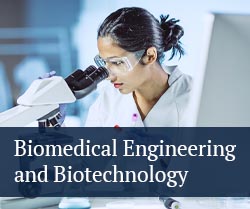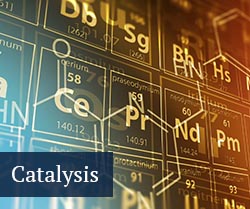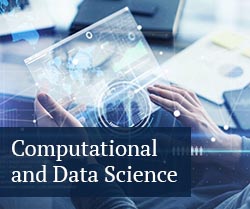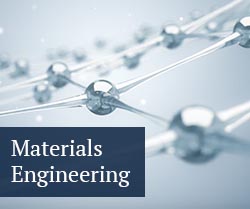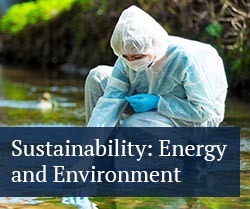
Faculty Research Groups
Chemical Engineering Laboratories
Kostas Alexopoulos
Heterogeneous catalysis, reaction engineering, computational chemistry, machine learning, multiscale modeling
Monty Alger
Process design and development, technology commercialization, process improvement
Antonios Armaou
Nonlinear process dynamics analysis and control, computational modeling of multiscale systems, process analysis design and control of spatially distributed processes with application to microelectronics manufacturing and biology.
Ali Borhan
Fluid dynamics and hydrodynamic stability of multi-phase systems, interfacial transport phenomena, complex fluids.
Bert Chandler
Heterogeneous Catalysis: Reaction kinetics and mechanisms, Infrared spectroscopy, nanoparticle and catalyst synthesis, reaction development, selective oxidations, selective hydrogenations, catalytic separations, energy storage and recovery, environmental catalysis.
Ezra L. Clark
Electrocatalysis for a Sustainable Future: Heterogeneous electrocatalysis, electrochemical reaction mechanisms and kinetics, electrochemical surface science, organic electrosynthesis, carbon dioxide utilization, electronic structure engineering of intermetallic electrocatalysis, operando electrochemical spectroscopy, electrochemical mass spectrometry.
Wayne Curtis
Bioprocess Design and Optimization: Chemical production and protein expression from plant tissue cultures, bioreactor design for non-traditional fermentation, plant genetic engineering.
Kristen Fichthorn
Multiscale Simulation of Fluid-Solid Interfaces: Fluid-solid interfaces, nanoscale materials, thin-film and crystal growth, colloidal assembly, wetting, quantum density-functional theory, molecular dynamics, Monte Carlo methods.
Enrique Gomez
Connecting Chemistry, Structure, and Macroscopic Properties of Soft Materials: Polymers, organic electronics, organic solar cells, electron microscopy of soft materials. Waste reduction through design of eco-efficient materials.
Esther Gomez
Mechanobiology; Structural Characterization of Biological Assemblies Using Advanced X-ray Scattering Tools: The interplay of chemical and mechanical signals acts to control cell behavior and function and the progression of disease; X-ray scattering for the characterization of biological assemblies, including plant cell walls and proteins in solution.
Michael Janik
Energy and Environment; Catalysis: Applying atomistic modeling approaches to study systems of relevance for advanced energy conversion technology; kinetic modeling of heterogeneous catalysis and electrocatalysis.
Seong Kim
Surface Science; Tribology, Glass, and Cellulosic Nanomaterials: Understanding surface reactions in sliding interfaces and developing more efficient and durable surfaces for engineering applications; elucidating lignocellulosic biomass structures to facilitate their catalytic conversions and energy applications.
Costas Maranas
Biotechnology and Synthetic Biology; Systems Engineering: Reconstruction analysis and redesign of metabolic networks, computational protein enzyme and antibody design, synthetic biology and metabolic engineering, and optimization theory and algorithms.
Patrick Mather
Shape memory and self-healing polymeric composites; electrospinning of nanomaterials; controlled release of drugs from electrospun and electrosprayed polymers
Themis Matsoukas
Interfaces and Surfaces: Colloids, aerosols, plasma processing, and population balances.
Scott Milner
Soft Matter Material Properties from Simulation and Theory: Glassy systems, ordering and crystallization, polymer entanglement, semiconducting polymers, and biomimetic membranes.
Gina Noh
Sustainable chemistry and environmental remediation: Develop catalysts for atom-efficient chemical transformations of modern, sustainable feedstocks (biomass-derived compounds, plastics, etc.)
Hee Jeung Oh
Polymer Membranes for Environment, Energy, and Health: Design, synthesis, processing, and characterization of polymers for energy-efficient separations, energy storage, and biomedical devices to address challenges in the Water-Energy nexus and in health. Focused on connecting the chemistry, structure, and transport properties of polymer membranes.
Tonya Peeples
Biotechnology of extremophiles, synthesis of specialty chemicals and pharmaceuticals, removing pollution from the environment (bioremediation), creating valuable products from bio-renewable starting materials.
Christian Pester
Shining Light on Soft Materials: Polymer chemistry and physics; engineering of smart and adaptive surfaces; optical lithography; heterogeneous photoredox catalysis.
Robert Rioux
Chemical Catalysts: Heterogeneous catalysis, catalyst design and synthesis, time-resolved FTIR spectroscopy of condensed systems, x-ray absorption spectroscopy (EXAFS, XANES), reaction mechanisms in nanoscale systems, photocatalysis.
Howard Salis
Synthetic Biology, Genetic and Metabolic Engineering, DNA Design: Predictive biophysical models and design algorithms to rationally engineer synthetic genetic systems and organisms, including bacteria, yeast, and in vitro systems.
Phillip Savage
Kinetics, Catalysis, and Reaction Engineering for Sustainability: Research focuses on the conversion of microalgal biomass to renewable fuels and on chemical recycling of various wastes (e.g., food waste, waste plastics) into fuels and/or useful chemicals.
Amir Sheikhi
Bio-Soft Materials Laboratory (B-SMaL): Micro- and nanoengineered soft materials for medicine and the environment; microfluidic-enabled granular biomaterials for tissue engineering and regeneration; living materials; next-generation bioadhesives, tissue sealants, and hemostatic agents; hydrogels for minimally invasive medical technologies; self-healing and adaptable soft materials; smart coatings; hairy nanocelluloses as an emerging family of advanced materials.
Rui Shi
Sustainable Systems, Design, and Decision-making: Life cycle assessment; sustainable bioenergy futures; industrial ecology; global sensitivity and uncertainty analysis; decision-making under uncertainty; sustainable design of energy systems; advanced computational models; optimization algorithms; data analytics.
Ezgi Toraman
Alternative energy resources, biomass and plastic waste pyrolysis, shale gas upgrading, reaction kinetics, compositional analysis of (bio-)oils, data science.
Darrell Velegol
Econochemistry: Decision making, chemical game theory, tragedies of the commons, chemical innovation. Chemistry and Chemical Engineering principles applied to problems in economics.
Bryan Vogt
Additive manufacturing, polymer physics, energy storage, advanced characterization.
Thomas Wood
Synthetic biology, antibiotic tolerance (persister cells), toxin/antitoxin systems, biofilms, and cell signaling: Research pursuits include understanding the genetic basis of antibiotic tolerance and the genetic basis of biofilm formation to prevent disease and utilizing biofilms for beneficial biotransformations including remediation, green chemistry, and energy production.
Andrew Zydney
Membrane Separation Systems for Bioprocessing and Medical Devices: Purification of high-value biological products including recombinant proteins, gene therapy agents and vaccines; application of membrane systems for bioseparations and artificial organs.
Affiliated Research Laboratories
Harry Allcock
Development of Fundamental Science at the Interface Between Chemistry, Materials Science, and Biomedicine: Design and synthesis of new hybrid organic-inorganic polymers with hitherto unseen combinations of useful properties. Many of the polymers in the program are based on the polyphosphazene platform.
Ralph Colby
Polymer Physics and Rheology: Molecular understanding of the structure and dynamics of polymer liquids and their manipulation to control mechanical properties.
Bruce Logan
Researching Technologies for an Energy Sustainable Water Infrastructure: Development of new renewable energy technologies, including microbial fuel cells and thermal batteries, desalination, and water electrolysis.
Adri van Duin
Development and Application of Reactive Force Field Methods: Simulate physical and chemical interactions in molecules and materials, which enables applications to materials and molecules covering the entire periodic table.


